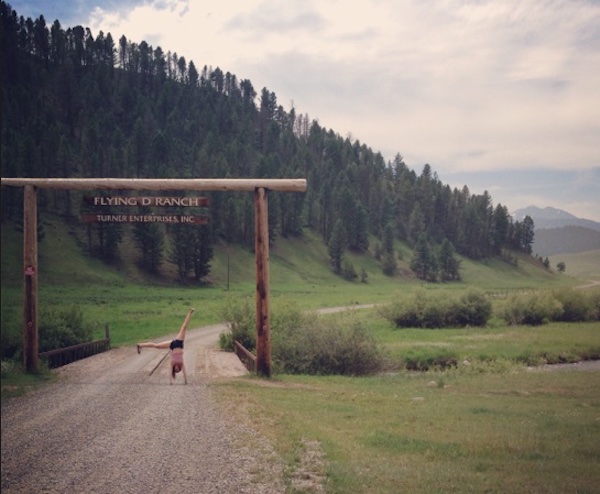When I first got to Montana and started writing down my field notes, I took a few pictures and sent them off to my advisor Cindi. Nothing screams appropriate quite like sending your advisor a picture of you doing a cartwheel in a field. However, she took it in the vein I intended, and told me some good advice: ‘Have fun, ask questions, and use your senses all the time!’ This reminder is something I’ve tried to retain throughout all that I’ve been doing while I’m here. In particular, using my senses all the time. It’s easy to write down a slew of facts about my day, but actually describing the other sensory input is a little different- the way the hills are starting to go from green to yellow due to the summer heat, the daily temperature fluctuations that occur when living in high dessert, and even the awful ear-popping that occurs whenever I’m changing altitudes quickly. Employing all five senses in ethnographic work is a big part of painting a picture in your observations that vividly and effectively captures what it is that you’re experiencing. That being said, every person experiences a setting differently- hence the idea of situated knowledge a la Donna Haraway when it comes to doing research. When I go to write up my field notes at the end of the day, it usually takes me sitting down and playing back everything I made a mental note of during the course of the day. Trying to get it all down on a page sometimes results in my brain thinking faster than I can write. Yet somehow it all gets written down. The whole point of these field notes- outside of my interviews and videography/filmography is so that when I’m back in New York I can bring myself back to this place and have all the senses evoked. Writing an ethnographic overview and assessment of predator coexistence would be insufficient if I didn’t try to incorporate these senses. Recently, my ability to describe my senses was put to the test when I sat down to talk to my friend Julio- one of the many awesome people who’s kept me from getting lost in my work while I’m here. He runs a podcast called pictures and people talking, and he interviewed me (as a change of pace) on how I view and use my senses. His podcast with me, and others, can be found here: http://picsandpeopletalking.tumblr.com/

In terms of my own research, ethnography is a big part of what I’m doing out here because I’m aiming to integrate nonhuman animals’ perspectives on these conflicts of coexistence. I don’t pretend that I will ever fully be able to encapsulate a grizzly or wolf or mountain lion’s experience of migrating, living, and reproducing here in the Greater Yellowstone Ecosystem, but I do intend to capture the checkerboard mosaic of unsafe spaces that these creatures encounter both physically and socially. Part of this idea comes from my own frustration with the fact that so often, especially in the science and policy that drives management decisions, we struggle to incorporate the vantage points of the nonhuman animals- the very same ones we seek to manage! This sentiment is something that I’ve long held- in fact, I got started at a young age wondering what animals were thinking when I would stare at my dogs as they would intently focus on something (most likely a squirrel) outside the window. Look, I’m an only child, sometimes I had to get a little creative with how I entertained myself…Anyways, I would watch my dogs and try to imagine what it’s like from their point of view. I still do that, only now I spend my time thinking about it in terms of a grizzly trying to travel through the terrain of the U.S. Sheep Research Station or a wolf looking for a meal on a ranch or even a cougar in someone’s backyard thinking that a little kid looks a lot like a tasty porkchop. There are so many ways for an animal to misstep and lose its life out here, so my sensory research is really intended to generate a multispecies or, rather, a more-than-human ethnography of the predator conflicts.
I should add one more note, this past weekend, my oldest dog Sandi had to be put down. She was 16 and was struggling, but it didn’t make it any easier to get the phone call and be so far away from her when I found out. She was one of my first research participants. I never got ‘official’ consent from Sandi to observe her, but I paid her in dog treats, so I’m pretty sure she was okay with it. She, Molly, Devon, Luce, Sunny, and all of my pets have been a big part of why I find animals so fascinating, and it always hurts to lose someone who played a big part in shaping who you are. So, in a way, this post is inspired by Sandi and all of the other critters who gave me the idea to think about animals and their conservation in a little bit of a different way.